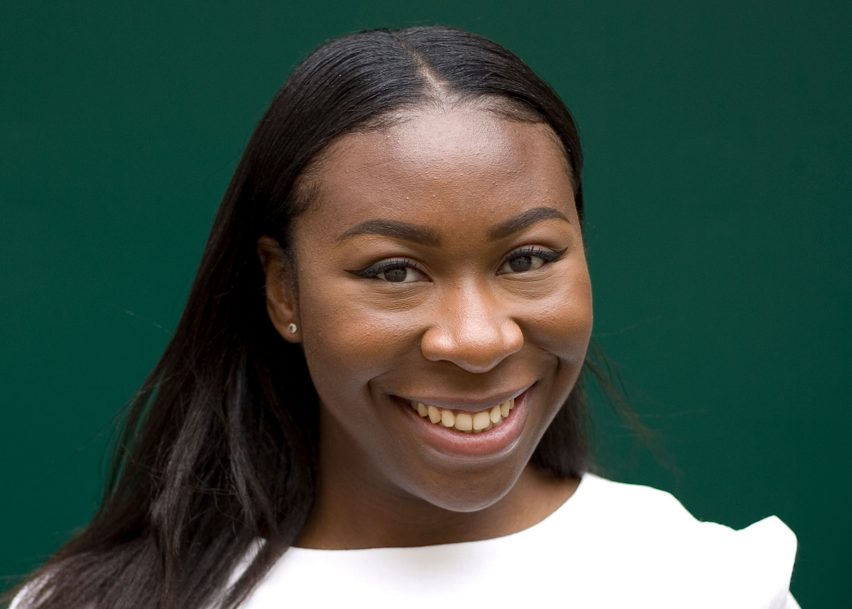
"I aim to shed light on what it is like walking in the shoes of a black woman within architecture"
Systemic racism is prevalent in architecture says Sylvia Aehle, a Part 2 architectural assistant in London, who describes her experience as a black female in the profession.
Racism is a topic that is loud and in your face, but most of the time especially in British culture as it pertains to my experiences, it is brushed under the carpet with a determined and final swoop. I would prefer not to address or write about it, not because it is messy and makes me stand out more than I already do, but because it is ever-present and I don't see how my words will change that.
While I present issues surrounding race and architecture and my blackness in these contexts, I want to speak frankly, this is not a palatable read. The term BAME is more accepted because of its vagueness but in this context, I will refer to myself as the black woman that I am. It would be irresponsible to assume other minorities within the BAME community have the exact same experience as myself.
We are amid an international civil rights movement that is highlighting many injustices. It is easy for people to say that racism does not exist in the UK because police do not carry guns and black men are not facing the same type of police brutality present in the US.
It is easy for people to say that racism does not exist in the UK
Please understand that systematic racism is still prevalent in the UK and even more so in a white-collar profession such as architecture. I aim to shed light, however brief, on what it is like walking in the shoes of a black woman within architecture.
There may not be much overt racism, but it still is very much a white and middle-class boys club. The way I consider job opportunities is completely different from my white counterparts and that is very telling of how I view myself as an outsider in this context.
I have spent time browsing through websites of practices scanning the faces of all the employees to see if there is hopefully one black person amongst them. Not because there is need of an ally that looks like me but rather as an indicator of the practice's attitude towards hiring someone that doesn't look like them.
When you do come across the token black person it is a double-edged sword. On one hand, if they have given one person that looks like you a chance, maybe they will give you a chance too. On the other hand, you wonder whether that person is solely there to tick the diversity box and if so, there probably won't be the need for any more. Because God forbid that there is a whole cluster of us taking up space.
Why have I adopted this narrative? Why do I think about my race before I have even stepped foot in the practice?
Being othered has become part of who I am and how I think. Society reminds me constantly that my skin colour is a factor. For this reason, as I mentioned earlier I prefer not to address it, but I do recall a time when I was discussing my post Part 2 ambitions with my tutor – a much older white, respected, and internationally recognised British architect. He suggested certain high profile and exclusive practices that I might apply for and I was able to tell him quite frankly that: "You're forgetting I'm black, it's not as easy for me to wow them based just on my work".
Being othered has become part of who I am and how I think
Due to the nature of our tutor/student relationship, I could openly discuss such a delicate subject with him without him getting second-hand embarrassment or denying what my reality is. Am I just a hysterical black woman making much ado about nothing?
Figures published by the RIBA on education statistics show that progression from Part 1 to Part 2 is disproportionally low for ethnic minorities. The many nuances of being othered are often part of navigating daily life for myself and other black British professionals and therefore it is no surprise that some black/ethnic minority architecture students choose not to continue past their Part 1.
I am no Martin Luther King or Nelson Mandela or any other type of black freedom writer you may think of. You might ask how we could change this narrative. I'm afraid I don't have the answers on how this widespread issue can be resolved.
An anecdote that may help is going back to the conversation I had with my tutor: the reason I was able to speak so candidly with him about race and the challenges I experience, is because he treated me like everyone else. He was educated about the social inequalities that black people often go through; he also wasn't hesitant in acknowledging that truth and was courageous enough to have an honest discussion about it. Maybe we should start there.